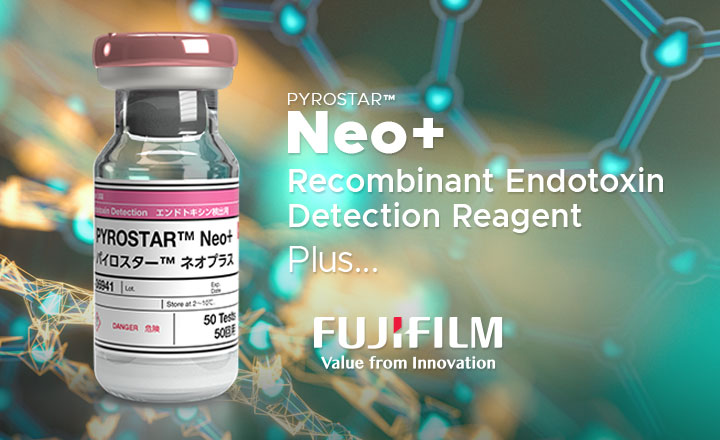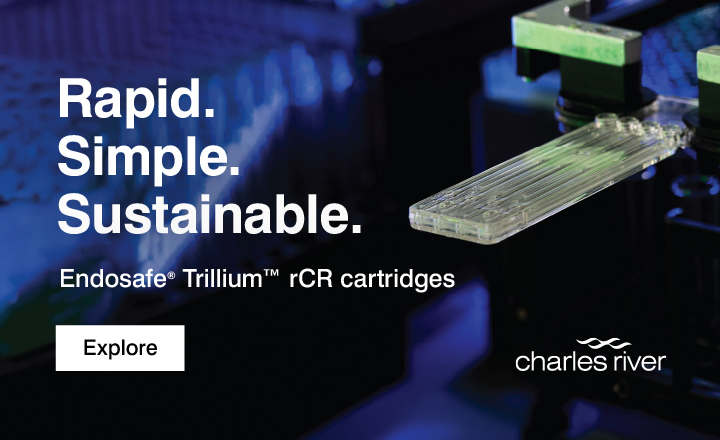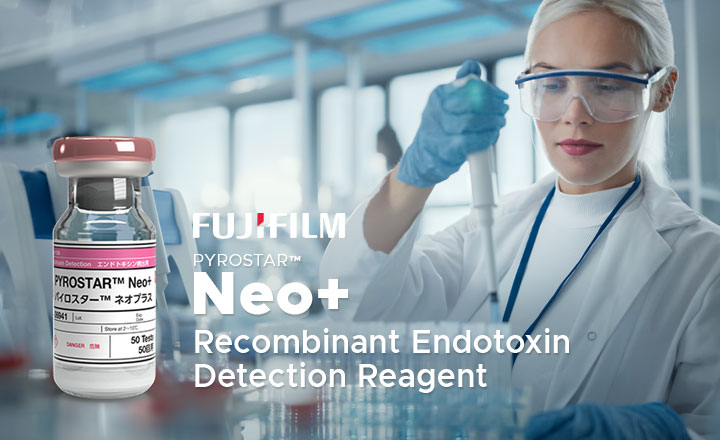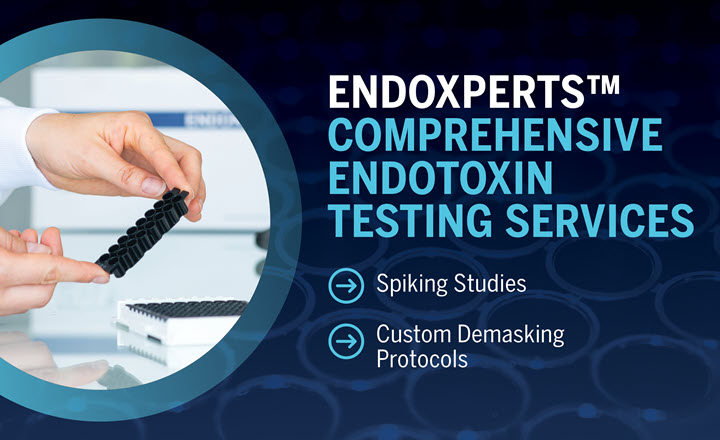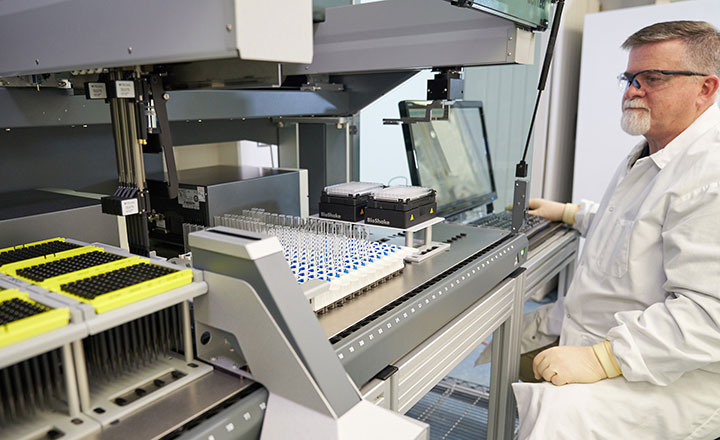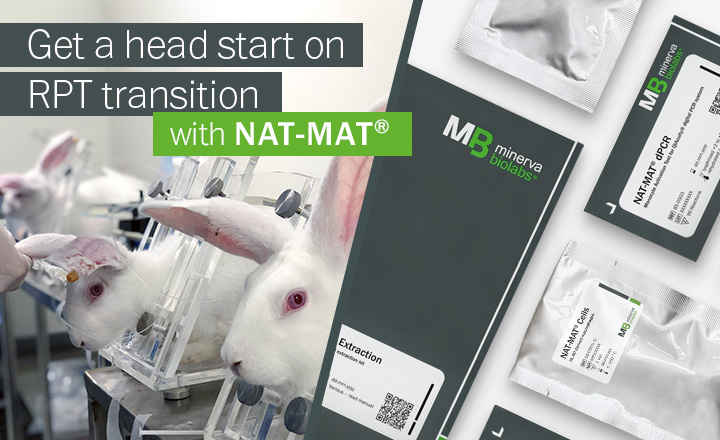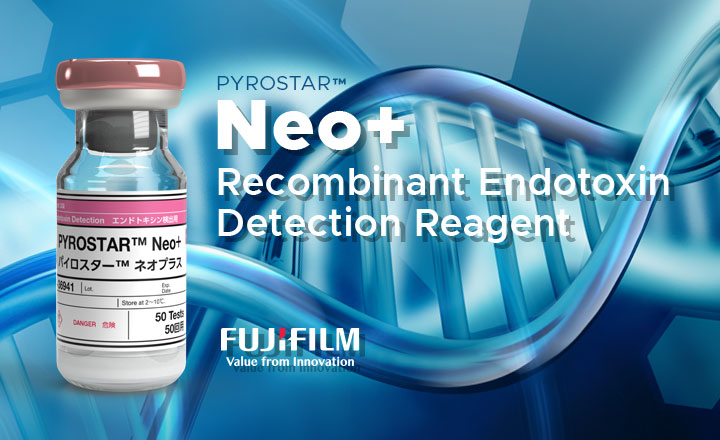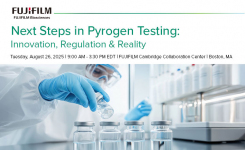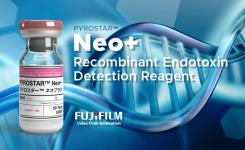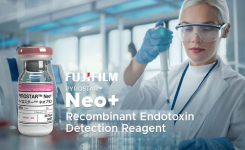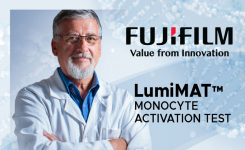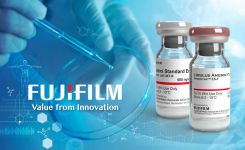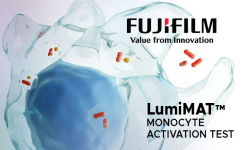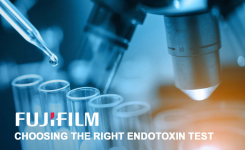FUJIFILM Irvine Scientific's commitment to sustainable and accurate endotoxin testing is reshaping the industry. By collaborating closely with laboratories, they're not just providing products but fostering a partnership that drives innovation and environmental responsibility.
In this rapidmicrobiology interview, Timothy Francis and Delaney Novak, Technical Specialists, LAL Division of FUJIFILM Irvine Scientific, share their knowledge and experience of helping labs implement more sustainable and accurate endotoxin testing solutions and talk us through the features and benefits of using FUJIFILM Wako's rCR (Recombinant Cascade Reagent) PYROSTAR™ Neo+.
Q: How does the methodology for PYROSTAR™ Neo+ compare to the methodology of natural LAL?
Timothy and Delaney: Naturally derived LAL reagent is the basis for the test methods found in USP <85> for BET (Bacterial Endotoxin Testing). These are gel clot, turbidimetric, and chromogenic techniques. USP <86> for BET with recombinant reagents outlines two techniques—the fluorometric quantitative technique and the chromogenic absorbance technique. The fluorometric technique differs greatly from traditional LAL (Limulus Amebocyte Lysate) testing. However, the chromogenic technique is nearly identical to the chromogenic technique of USP <85> .
Since PYROSTAR™ Neo+ follows the chromogenic technique of <86>, its methodology is the same as the kinetic chromogenic technique of natural LAL. However, this cannot be said of every USP <86> compliant test, as the fluorometric techniques have no parallel technique in USP <85>.
One advantage of using rCR (Recombinant Cascade Reagent) PYROSTAR™ Neo+ is that is uses the same methodology, equipment, and accessories as natural LAL does. When using PYROSTAR™ Neo+, you will find that it is virtually identical to KCA (kinetic chromogenic assay) LAL methodology and does not require any special buffer for reagent dissolution nor fluorescence readouts. Additionally, PYROSTAR™ Neo+ can be used on an incubating absorbance plate reader and uses the same wavelengths of 405 and 650 nm that are used in a regular kinetic chromogenic assay.
Q: How does PYROSTAR™ Neo+ differ from other recombinant LAL products, such as rFC (recombinant Factor C)?
Timothy: rFC was the first recombinant BET reagent. By using synthesized “Factor C” (the protein in LAL that binds to endotoxin) along with a fluorescent reporter, an endpoint assay in which the endotoxin concentration can be quantified based on the fluorescent response was created. This reader and reagents used are distinct from natural LAL measurement techniques.
Neo+ is a recombinant cascade reagent (rCR), in which the complete 3-factor protein cascade of natural LAL is replicated, allowing for the same chromogenic substrate used in chromogenic LAL to be used to create Neo+’s signal response to endotoxin. This produces an endotoxin assay remarkably like natural LAL’s results and allowing for the advantages of kinetic measurements to be realized in the recombinant reagent’s results.
rFC was the pioneer method that allowed for a synthetic BET reagent. rCR reagents including PYROSTAR™ Neo+ are a more complete synthetic replication of natural LAL reagents and techniques.
Q: What preliminary testing or verification is needed to meet the requirements for USP <86>?
Timothy: The preliminary validation of accessories, personnel training, and IQ/OQ and calibration of instruments remains the same with USP <86> as those required of USP <85>.
Additionally, the assurance testing of the standard curve for each lot of Neo+ and the interference testing of each product remains unchanged from USP <85>.
For a product that is new to BET testing and does not currently have monographic requirements, no additional preliminary testing and verification is required.
For products with existing USP <85> monographic requirements, comparison testing with current natural LAL reagent and some additional testing as required by the regulatory body may be necessary.
Q: What expectations are there that monographs will include USP <86>?
Timothy and Delaney: Currently, monographs that list only USP <85> as the required methodology for Bacterial Endotoxin Testing can still use recombinant methodologies outlined in USP <86> as a compendial alternative method. As a result, a full validation as outlined in USP <1225> is not required, but as outlined in USP <1226>, the verification considerations found in USP <86> can be considered.
This means that users who would like to transition to recombinant reagents will need to perform verification and product-specific testing, which is the same preliminary testing that is required for new users of natural LAL as well.
These considerations in USP <86> are nearly the same as those already found in <85> with the addition of a comparison study with <85> and potentially other considerations asked of by the regulatory bodies. A common example would be recovery of NOEs (Naturally Occurring Endotoxins) found at the client’s site.
While there is not a specific timeline to update each monograph to include USP <86>, end users of specific monographs are encouraged to share data with the USP when using recombinant methodologies.
Q: What considerations would a client need to take if they have a product without a monograph and an endotoxin limit that was calculated according to the directions of USP <85> (with K/M)?
Delaney: Like USP <85>, USP <86> also includes guidelines on calculating the endotoxin limit for a drug product, as well as how to calculate the MVD (Maximum Valid Dilution), for a product based on the test sensitivity and endotoxin limit. Additionally, the guidelines for calculating an endotoxin limit have remained unchanged. Users can still calculate endotoxin limits for their products by using K/M, which is the threshold pyrogen dose, or “K,” divided by the maximum bolus dose per hour, or “M.” However, a client should perform preparatory tests, including product-specific testing as well as interference testing, when adopting a new methodology.
Q: How has the formulation of PYROSTAR™ Neo+ changed from its predecessor, PYROSTAR™ Neo?
Timothy: The recombinant proteins found in Neo+ remain the same as found in Neo. The only changes were made to the buffers and excipients in the formulation.
The performance of the reagent remains unchanged as outlined in the specifications and package insert.
However, this change in formulation allows for some improvements in performance. Heparin-based products and certain cellular products presented interference to Neo. This interference is eliminated with Neo+. Also, the stability of negative controls is increased with Neo +. Additionally, the new formulation of Neo+ allows the reagent to be used on both a tube reader and a microplate reader, whereas Neo was only validated for use on a microplate reader.
Q: Can this chapter be applied to medical devices?
Delaney: Currently, USP <161>, which outlines guidance for BET for medical devices, lists USP <85> as required testing for these devices. However, with USP <86> now being a compendial alternative method, users can now use recombinant LAL reagents for BET for medical devices, following <1226> verification requirements.
Q: Is this chapter harmonized?
Delaney: While USP <85> on BET is harmonized with Ph. Eur. Chapter 2.6.14 and JP General Test No. 4.01, USP <86> on BET with recombinant reagents is not harmonized with any other pharmacopeia currently.
Currently, the European Pharmacopoeia only lists rFC as a compendial method for BET in Chapter 2.6.32. This differs from USP <86>, which outlines both rFC and rCR as compendial methods for BET. Additionally, while recombinant methodologies are now considered to be compendial methods in the US and Europe, recombinant LAL methodologies are still only a “compendial guidance chapter” in Chinese, Japanese, and Korean pharmacopeias.
Q: What research has been published and is available to evaluate PYROSTAR™ Neo+?
Delaney: For PYROSTAR™ Neo+, we offer a primary validation package that covers aspects of linearity, range, quantitation/detection limit, accuracy, and precision following USP <1225> and ICH Q2(R2) guidance on adoption of an alternative method.
Additionally, there has been various research published on PYROSTAR™ Neo, which includes product-specific client data, including the following:
- Kikuchi, Y, et al. 2023. Collaborative Study of Bacterial Endotoxins Test Using Recombinant Factor C-Based Procedure for Detection of Lipopolysaccharides (Part 3).
- Bolden, J. 2023. An Ongoing Analysis of Recombinant and Naturally Derived BET Reagent Comparability. Indianapolis: Eli Lilly and Company.
- Kim S, et al. 2023. LPS Administration during Fertilization Affects Epigenetic Inheritance during Embryonic Development.
- Yoneda E, et al. 2024. Evaluation of Lipopolysaccharide and Interleukin-6 as Useful Screening Tool for Chronic Endometritis.
Q: How does FUJIFILM support validation for PYROSTAR™ Neo+?
Timothy and Delaney: At FUJIFILM, we supply a primary validation package for Neo+ that includes both a test plan and a test report so that users can replicate testing on site and compare results. We are also available to assist in creating product-specific test plans to accommodate <1226> verification requirements. Additionally, we can facilitate the transition to recombinant LAL for users who currently use a natural LAL methodology.
Those who currently use a kinetic chromogenic LAL assay will find that the transition to Neo+ does not require the purchase of any additional materials or equipment.
A user transitioning from the kinetic turbidimetric method may need to ensure their reader can perform a measurement at the correct wavelength, but all other materials should remain the same.
Users transitioning from quantitative endpoint methods may need an additional reader if their current reader cannot perform kinetic reads.
Finally, users transitioning from the gel clot method, as they would transitioning to any quantitative method, will need new equipment and materials. However, as we would with any potential client, we at FUJIFILM will be able to aid the client in transitioning and validating the new equipment and methods.
To make sure your endotoxin method is the right choice for your products, use the "Request Information" button below to connect directly to the Fujifilm Irvine Scientific - or visit www.wakopyrostar.com
About Timothy Francis

About Delaney Novak



